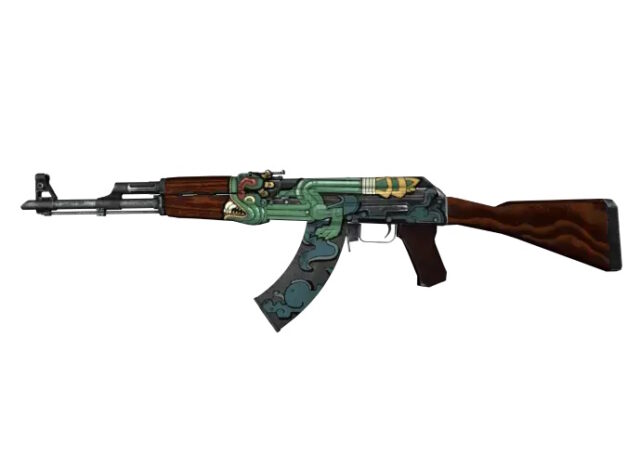
Counter-Strike 2 has inherited one of gaming’s most lucrative virtual economies, where digital weapon skins command prices that rival luxury cars and real estate investments. The transition from CS:GO brought with it an established marketplace where collectors, traders, and investors converge around digital assets that exist purely within the confines of Valve’s tactical shooter.
The fascination with the most expensive cs2 skins extends far beyond simple cosmetic preferences, representing a complex intersection of rarity, historical significance, and market psychology. These premium items serve as status symbols within the gaming community while simultaneously functioning as alternative investment vehicles that have generated substantial returns for savvy collectors who recognized their potential early.
The Crown Jewels of Digital Arsenal
At the apex of CS2’s skin hierarchy stands the legendary AWP Dragon Lore, a sniper rifle skin that has consistently commanded astronomical prices since its introduction. Factory New condition Dragon Lores have sold for figures exceeding $150,000, with their distinctive artwork and extreme rarity making them the holy grail for serious collectors. The skin’s mythical status stems from its limited availability through Cobblestone Collection drops, which were discontinued years ago, creating an ever-shrinking supply of pristine examples.
The AK-47 Case Hardened with specific blue patterns represents another pinnacle of CS2 skin valuation. Pattern variations with extensive blue coloring, particularly the coveted “661” pattern, have reached six-figure valuations due to their unique appearance and statistical rarity. Unlike other expensive skins that derive value from artistic design, Case Hardened weapons create value through algorithmic chance, making each example potentially unique in the global marketplace.
Karambit and other knife skins dominate the upper echelons of skin pricing, with Factory New Crimson Web patterns commanding premium prices based on web placement and overall condition. The psychological appeal of knife skins, combined with their prominent in-game visibility and animation sequences, creates sustained demand that supports their elevated market positions.
Market Dynamics and Valuation Factors
The CS2 skin market operates on principles that mirror traditional collectibles markets, with condition, rarity, and provenance playing crucial roles in determining value. Float values, which determine a skin’s visual condition, can create dramatic price differences between otherwise identical items. A weapon with a 0.00X float value might command double the price of one with a 0.0X float, despite minimal visual differences that only expert collectors can distinguish.
Historical tournament drops and professional player associations add premium value to certain skins through provenance. Items that appeared in major championship matches or were owned by legendary players often carry significant markup above their base market values. These stories and connections transform functional game items into pieces of esports history that collectors actively pursue.
Market manipulation and artificial scarcity occasionally influence skin prices, with coordinated buying groups or influential traders capable of dramatically affecting valuations for specific items. The relatively small size of the ultra-premium skin market makes it susceptible to these influences, creating both opportunities and risks for serious investors.
Investment Perspectives and Market Evolution
Professional skin trading has evolved into a sophisticated investment ecosystem where experienced traders employ complex strategies involving market timing, condition arbitrage, and cross-platform price differences. Some traders specialize in specific weapon types or collections, developing expertise that allows them to identify undervalued items before broader market recognition drives prices higher.
The transition from CS:GO to CS2 created unique market dynamics as traders evaluated how visual improvements and engine changes might affect skin desirability. Some older skins benefited from enhanced lighting and texture systems, while others lost visual appeal, creating winners and losers that astute traders could anticipate and capitalize upon.
Institutional involvement has begun emerging in the CS2 skin market, with some investment firms and cryptocurrency platforms offering skin-backed financial products. These developments suggest growing mainstream recognition of virtual item values and potential future integration with traditional financial markets.
Platform Ecosystem and Trading Infrastructure
Steam Community Market serves as the official trading platform for CS2 skins, though its $2,000 transaction limit excludes the most expensive items from direct platform trading. This limitation has fostered a parallel economy of third-party marketplaces, private dealers, and direct player-to-player transactions that handle ultra-premium skin trading.
Professional trading platforms like DMarket, Skinport, and others have developed sophisticated infrastructure to support high-value transactions, offering escrow services, authentication systems, and insurance policies that provide security for expensive skin trades. These platforms compete on fees, security, and user experience while serving an increasingly demanding clientele.
The emergence of cryptocurrency integration has streamlined international skin trading, allowing collectors worldwide to participate in the premium market without traditional banking limitations. Blockchain-based ownership verification and smart contract automation represent potential future developments that could further professionalize skin trading.
Cultural Impact and Future Outlook
Expensive CS2 skins have transcended their gaming origins to become cultural phenomena that attract attention from mainstream media and traditional collectors. The concept of paying substantial sums for digital items that exist only within a video game challenges conventional notions of value and ownership, yet the sustained market growth suggests widespread acceptance of these new asset classes.
The future of premium CS2 skin valuation depends heavily on the game’s continued popularity, Valve’s policy decisions regarding item creation and distribution, and broader acceptance of virtual assets as legitimate collectibles. As younger generations become more comfortable with digital ownership concepts, the market for expensive virtual items is likely to expand beyond its current gaming-focused demographic.
Disclaimer
The information contained in South Florida Reporter is for general information purposes only.
The South Florida Reporter assumes no responsibility for errors or omissions in the contents of the Service.
In no event shall the South Florida Reporter be liable for any special, direct, indirect, consequential, or incidental damages or any damages whatsoever, whether in an action of contract, negligence or other tort, arising out of or in connection with the use of the Service or the contents of the Service. The Company reserves the right to make additions, deletions, or modifications to the contents of the Service at any time without prior notice.
The Company does not warrant that the Service is free of viruses or other harmful components












